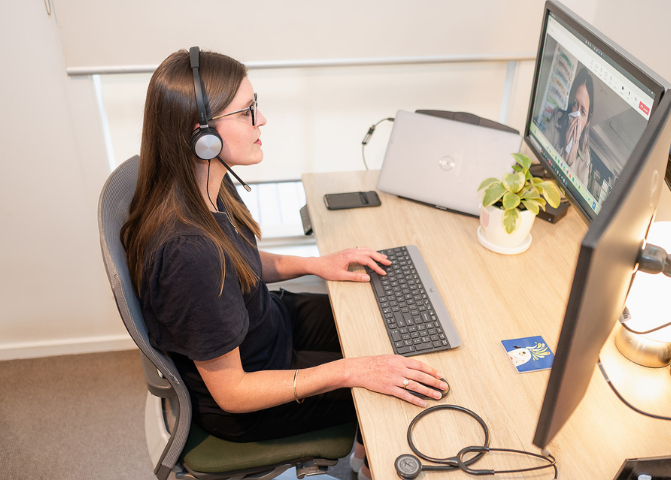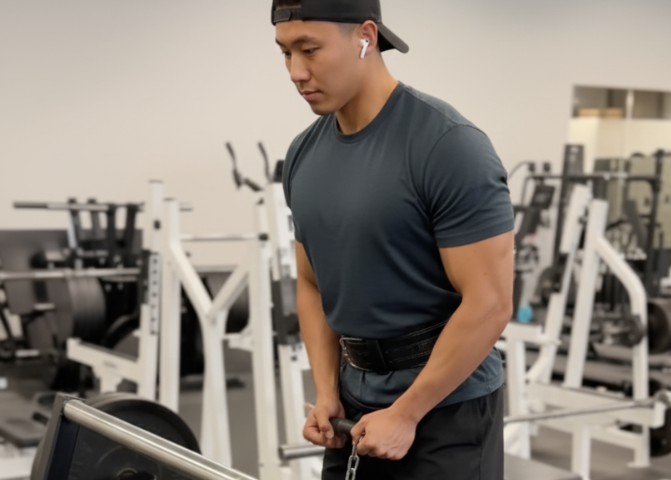26/09/2025
Impetigo (School Sores): Your Complete Parent Guide
Impetigo, often called school sores, is a highly contagious bacterial skin infection affecting millions of children each year. This common childhood condition shows up as red sores or blisters that quickly break open, weep, and form honey-colored crusts – typically around the nose and mouth. At Medmate, our Australian-registered doctors regularly treat impetigo through convenient telehealth appointments, helping families manage this condition from home. Understanding what causes impetigo, its impetigo symptoms, and treatment options helps parents protect their children and prevent its spread through schools and communities.
What Is Impetigo and Why Does It Happen?
Understanding the Bacteria Behind It
Impetigo develops when bacteria enter the skin through cuts, scrapes, or insect bites. Two main bacteria cause this infection:
- Staphylococcus aureus (staph) – causes 80% of cases
- Streptococcus pyogenes (strep) – causes the remaining 20%
- Sometimes both bacteria work together
Types of Impetigo to Know
Non-bullous impetigo makes up 70% of cases and creates small blisters that quickly burst, leaving honey-crusted sores. You’ll usually see this type around the nose and mouth.
Bullous impetigo forms larger, fluid-filled blisters that stay intact longer before breaking. These commonly appear on the trunk, arms, and legs of infants and young children.
Spotting Impetigo Symptoms in Your Child
Early Warning Signs
Watch for these initial symptoms:
- Small red spots that quickly become blisters
- Itchy or uncomfortable skin areas
- Fluid-filled blisters that burst within 24-48 hours
- Golden-yellow crusts forming over burst blisters
- Sores spreading to nearby skin
As It Progresses
Children may experience:
- Multiple patches of infected skin
- Swollen lymph nodes near the infection
- Mild fever (uncommon but possible)
- General discomfort or irritability
- Skin that feels warm when touched
How Impetigo Spreads in Schools and Communities
Direct Contact Spread
Impetigo spreads quickly through:
- Skin-to-skin contact during play or sports
- Sharing personal items like towels, clothing, or bedding
- Touching infected sores then touching other surfaces
- Contact with nasal discharge from infected people
Conditions That Increase Risk
Several factors promote impetigo transmission:
- Warm, humid weather
- Crowded living spaces or classrooms
- Poor hygiene habits
- Existing skin conditions like eczema or insect bites
- Weakened immune systems
Treatment Options and Medical Care
When to Contact a Healthcare Provider
Seek medical care if:
- Sores appear on your child’s face or body
- The infection spreads despite home care
- Your child develops fever or seems unwell
- Sores become painful or show signs of deeper infection
- Multiple family members develop symptoms
Through Medmate’s 24/7 telehealth service, you can connect with Australian-registered doctors within minutes, getting professional assessment and impetigo treatment recommendations without leaving home. See an Online Doctor
Prescription Treatments
Topical antibiotics for limited infections:
- Mupirocin (Bactroban) applied three times daily
- Treatment typically lasts 5-7 days
Oral antibiotics for widespread or severe cases.
Medmate doctors can send electronic prescriptions during your consultation – delivered instantly to your phone and preferred pharmacy for same-day collection.
Home Care Support
Help healing with these steps:
- Gently wash skin with antibacterial soap and luke warm water
- Pat dry with a clean towel (wash immediately after)
- Apply prescribed antibiotic ointment as directed
- Cover with bandage or clothing if in public
- Keep your child’s fingernails short to reduce scratching
- Wash hands frequently throughout the day
Preventing Impetigo in Your Family
Daily Hygiene Habits
Put these preventive measures in place:
- Wash hands thoroughly with soap and water regularly
- Keep fingernails short and clean
- Treat cuts and scrapes promptly with antiseptic
- Avoid sharing personal items at home
School and Daycare Tips
Protect your child at school by:
- Teaching proper handwashing techniques
- Providing personal hand sanitizer for classroom use
- Making sure your child has their own water bottle and supplies
- Communicating with teachers about any skin concerns
- Keeping infected children home until 24 hours after starting antibiotics
Managing Household Exposure
When impetigo affects one family member:
- Wash the infected person’s clothing and bedding daily in hot water
- Disinfect bathroom surfaces and shared items regularly
- Use separate towels and washcloths for each family member
- Monitor other children for early signs
- Consider preventive measures for high-risk siblings
- Do doctor may prescribe antibiotic ointment for family members as well
Complications and Long-term Considerations
Potential Complications
While rare, untreated impetigo can lead to:
- Cellulitis: Deeper skin infection requiring stronger treatment
- Post-streptococcal glomerulonephritis: Kidney inflammation occurring 1-2 weeks after infection
- Scarring: Particularly with ecthyma or excessive scratching
- Sepsis: Rare but serious blood infection
Preventing Recurrence
Reduce repeat infections by:
- Completing all prescribed antibiotic courses
- Maintaining consistent hygiene routines
- Addressing underlying skin conditions
- Supporting immune health through good nutrition
- Creating a clean home environment
Frequently Asked Questions
How long is impetigo contagious?
Impetigo stays contagious until 24-48 hours after starting antibiotic treatment or until sores completely heal. Without treatment, the infection can spread for several weeks while sores contain fluid or crusts remain.
Can adults catch impetigo from children?
Yes, adults can get impetigo from infected children through direct contact or contaminated objects. While more common in children, adults with weakened immune systems, skin conditions, or close contact with infected people face higher risk.
Should my child stay home from school with impetigo?
Children with impetigo should stay home until 24 hours after starting antibiotic treatment and sores can be covered. Most schools need a doctor’s note confirming treatment has started before allowing return. Medmate provides official medical certificates during your telehealth consultation, delivered electronically for immediate use. Get a Medical Certificate Online
What’s the difference between impetigo and cold sores?
Impetigo is a bacterial infection causing honey-crusted sores anywhere on the body, while cold sores are viral infections typically around the mouth. Impetigo spreads through contact and responds to antibiotics, while cold sores recur and need antiviral treatment. It can be difficult to tell the difference – discuss with the doctor.
Can impetigo heal without antibiotics?
Small impetigo infections may heal within 2-3 weeks without treatment, but antibiotics assist recovery and prevent complications. Medical treatment reduces contagion risk, prevents spreading, and decreases chances of serious complications.
How can I tell if impetigo is getting worse?
Signs of worsening impetigo include spreading sores, increased pain, fever, red streaks from the infection site, or swollen lymph nodes. These symptoms need immediate medical attention as they may indicate deeper infection.
Is impetigo related to poor hygiene?
Impetigo can affect anyone regardless of hygiene habits, though good hygiene helps prevent its spread. The bacteria causing impetigo exist naturally on skin and in the environment, entering through minor skin breaks.
Can swimming pools spread impetigo?
Properly chlorinated pools pose minimal risk, but impetigo can spread through pool equipment, towels, and direct contact with infected swimmers. Children with active infections should avoid swimming until cleared by their healthcare provider.
What natural remedies help with impetigo?
While antibiotics remain the primary treatment, supporting measures include warm compresses, tea tree oil diluted in carrier oil, and good nutrition. Always consult a healthcare provider before trying alternative treatments.
How do I clean my house after impetigo?
Disinfect surfaces with dettol spray, wash all bedding and clothing in hot water, and replace toothbrushes. Focus on frequently touched surfaces like doorknobs, toys, and bathroom fixtures.
Can impetigo leave permanent scars?
Most impetigo infections heal without scarring, but deeper infections like ecthyma or excessive scratching may cause permanent marks. Prompt treatment and preventing scratching minimize scarring risk.
Why does impetigo keep coming back?
Recurring impetigo may indicate persistent bacteria in the nose, underlying skin conditions, or continued exposure to infected people. Your doctor may recommend nasal antibiotic treatment or checking household contacts.
Conclusion
Understanding impetigo empowers you to protect your child’s health and prevent this common infection from disrupting family life. By recognizing early symptoms, seeking prompt medical treatment, and following preventive measures, you can minimize impetigo’s impact on your household. Remember – while highly contagious skin infections, impetigo responds well to proper treatment and rarely causes serious complications when addressed quickly. With Medmate’s telehealth consultations available 24/7 across Australia, expert medical advice is just minutes away whenever you need it. Stay consistent with hygiene practices, communicate openly with your healthcare provider, and maintain preventive routines to keep your family healthy.
Recommended reading
Search for a specific topic or filter by categories to find information on what you need to know on the full Medmate Journal


The Belt Squat RDL is a Game-Changer
Looking to build a stronger, more powerful lower body while minimizing risk? The Belt Squat RDL might just be the exercise you’ve been missing. This unique movement, often overlooked, offers…